Beset by problems early on, Herzog and de Meuron's Barcelona Forum building has become an admired work of architecture as well as a destination spot, situated as it is next to a busy convention area.
Let’s face it – it’s not easy to stand out architecturally in Barcelona. The city’s architecture portfolio includes some of the most diverse and historical architectural projects in the world. Antoni Gaudí’s exquisite creations, like the Sagrada Família, Casa Batlló, and Casa Milà, have firmly established Barcelona’s reputation as an architectural haven. However, it’s not all Modernisme and Gothic revival in this Mediterranean coastal city. In fact, Barcelona’s 21st century architecture has been making its mark on the city’s impressive architectural scene for years.
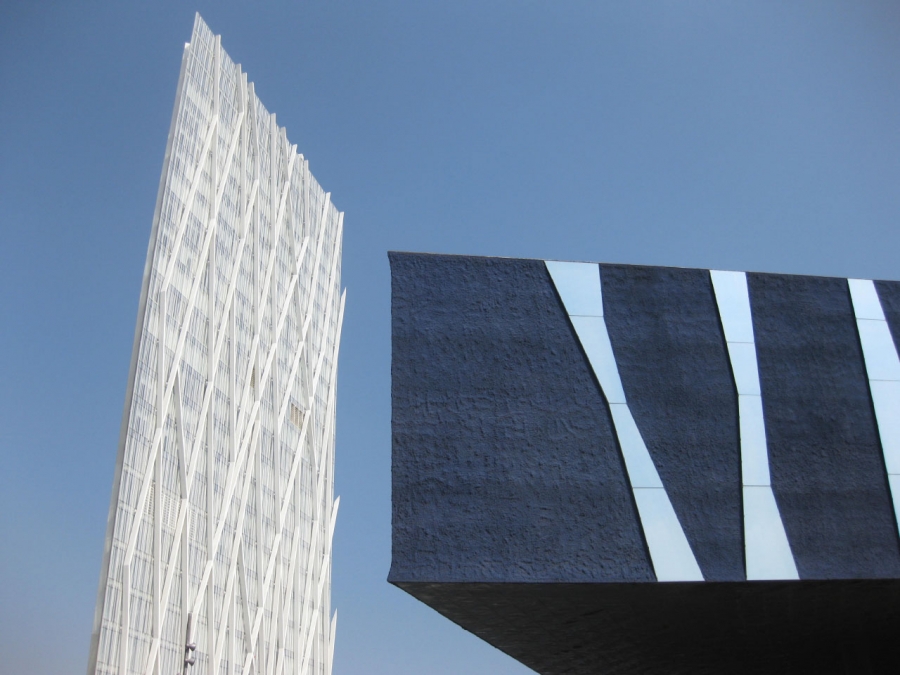 Image courtesy of Nicole Jewell
Image courtesy of Nicole Jewell
It’s only fitting, therefore, that a city with such an immense architectural presence should have large architectural names on its roster, and few architects get any bigger than Jacques Herzog and Pierre de Meuron. The Swiss architecture team has managed to design a very distinctively modern building, the Barcelona Forum, which brazenly holds its own among the more traditional architectural landmarks.
With the Barcelona Forum building, which now houses the Museu Blau of the overarching Museu de Ciències Naturals, Herzog and de Meuron not only managed to put a modern twist on the city’s landscape, which has long been home to a more classic art nouveau style, but they managed to create quite a swarm of controversy as well.
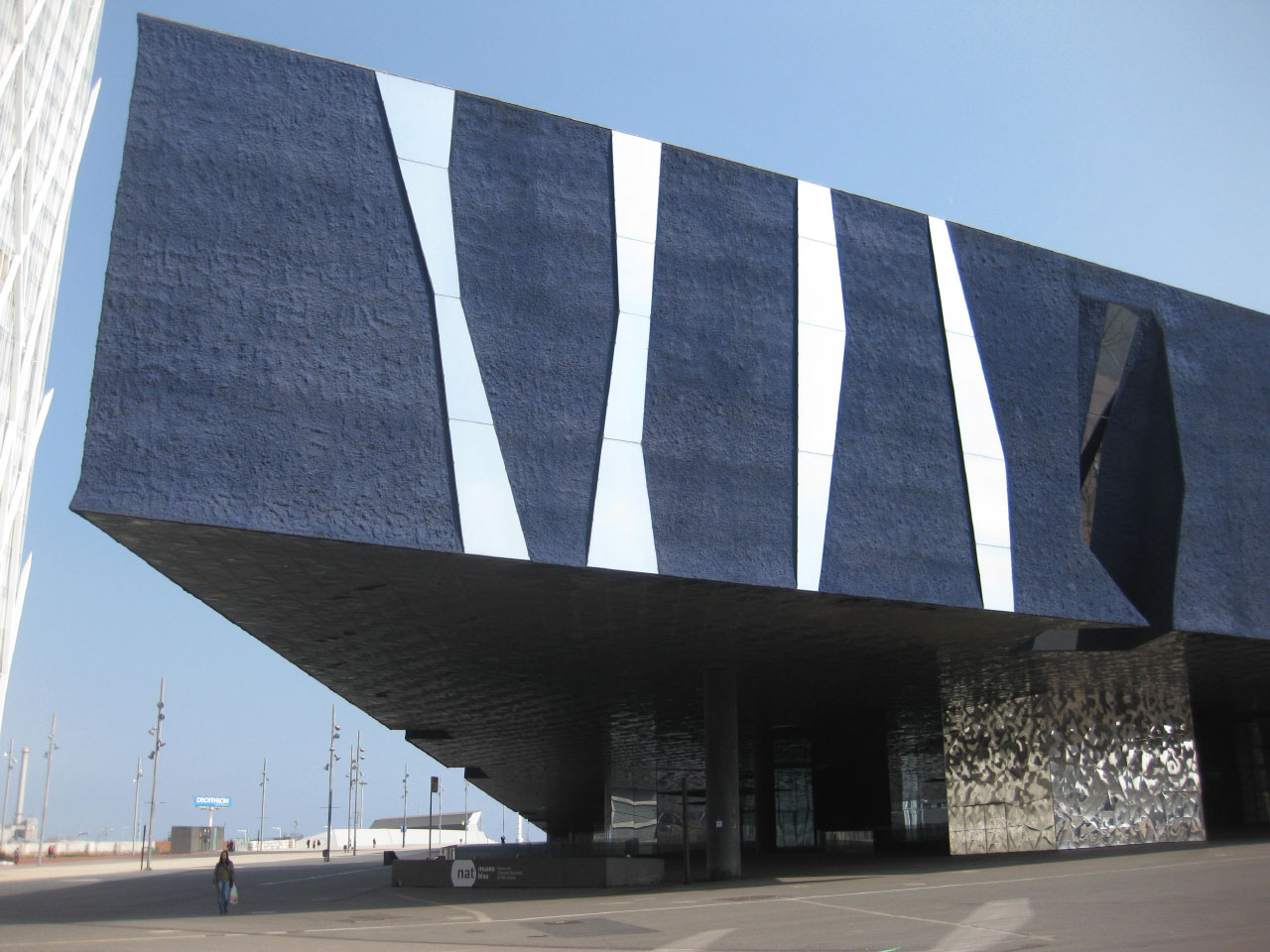
The Forum building was constructed as the home to the 2004 Universal Forum of Cultures, a 141-day international event that was intended to capitalize on the city’s tourism glut after the success of the 1992 Olympic Games. The event aimed to support peace, sustainable development, human rights, and diversity. However, the design flaws and overblown costs of the building invoked more criticism than peaceful harmony.
The event was the brainchild of then mayor, Pasqual Maragall i Mira, who received the brunt of the complaints regarding the budget, problematic construction issues, and biased organization of the international event. Due to a myriad of political protests that preceded the actual event, the quirky triangular Forum building made headlines as the center of controversy even before its inauguration. The biggest complaint, in addition to the exorbitantly high cost of $144 million, was the inept construction features, highlighted by some major roof drainage issues.
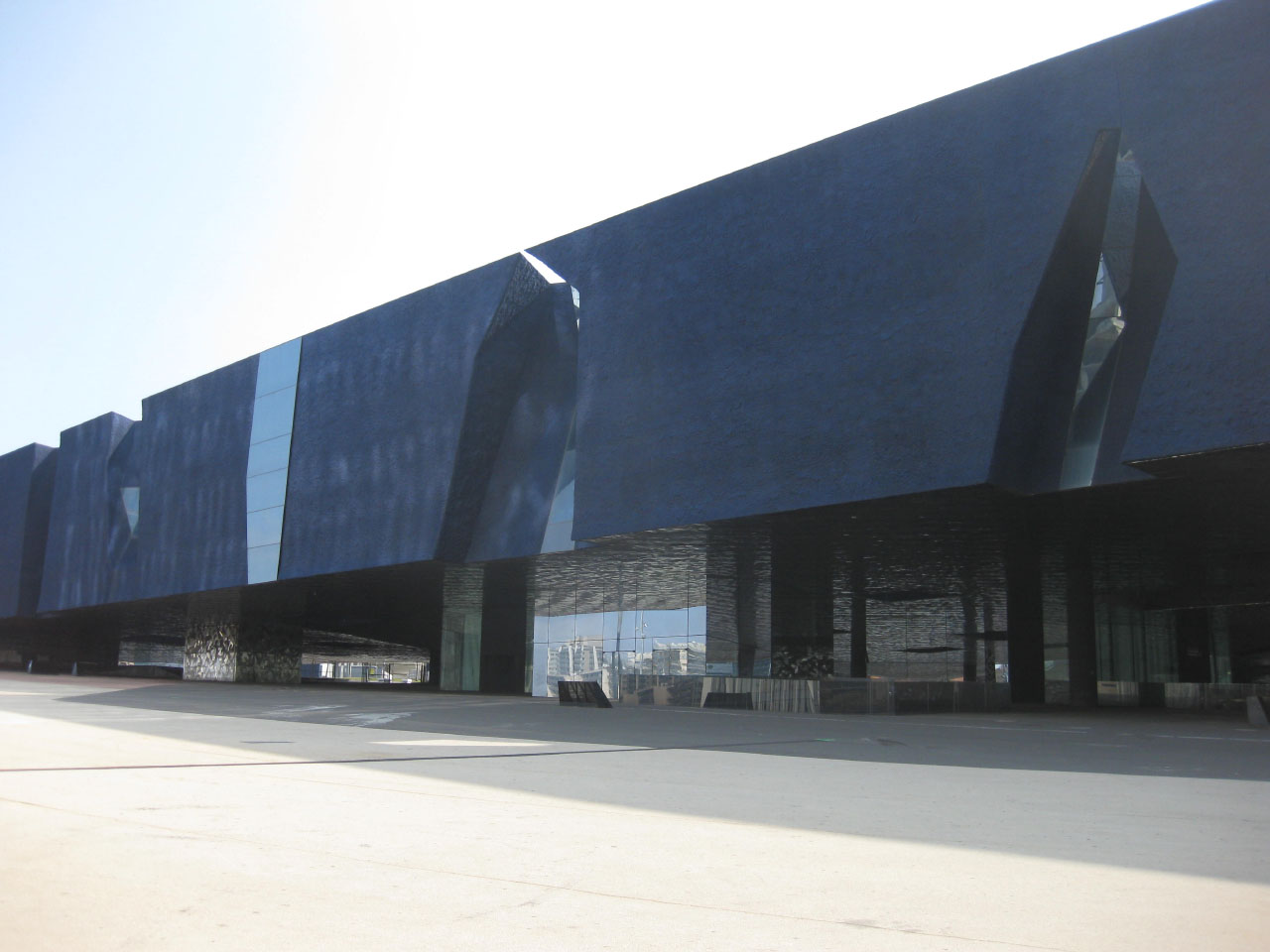
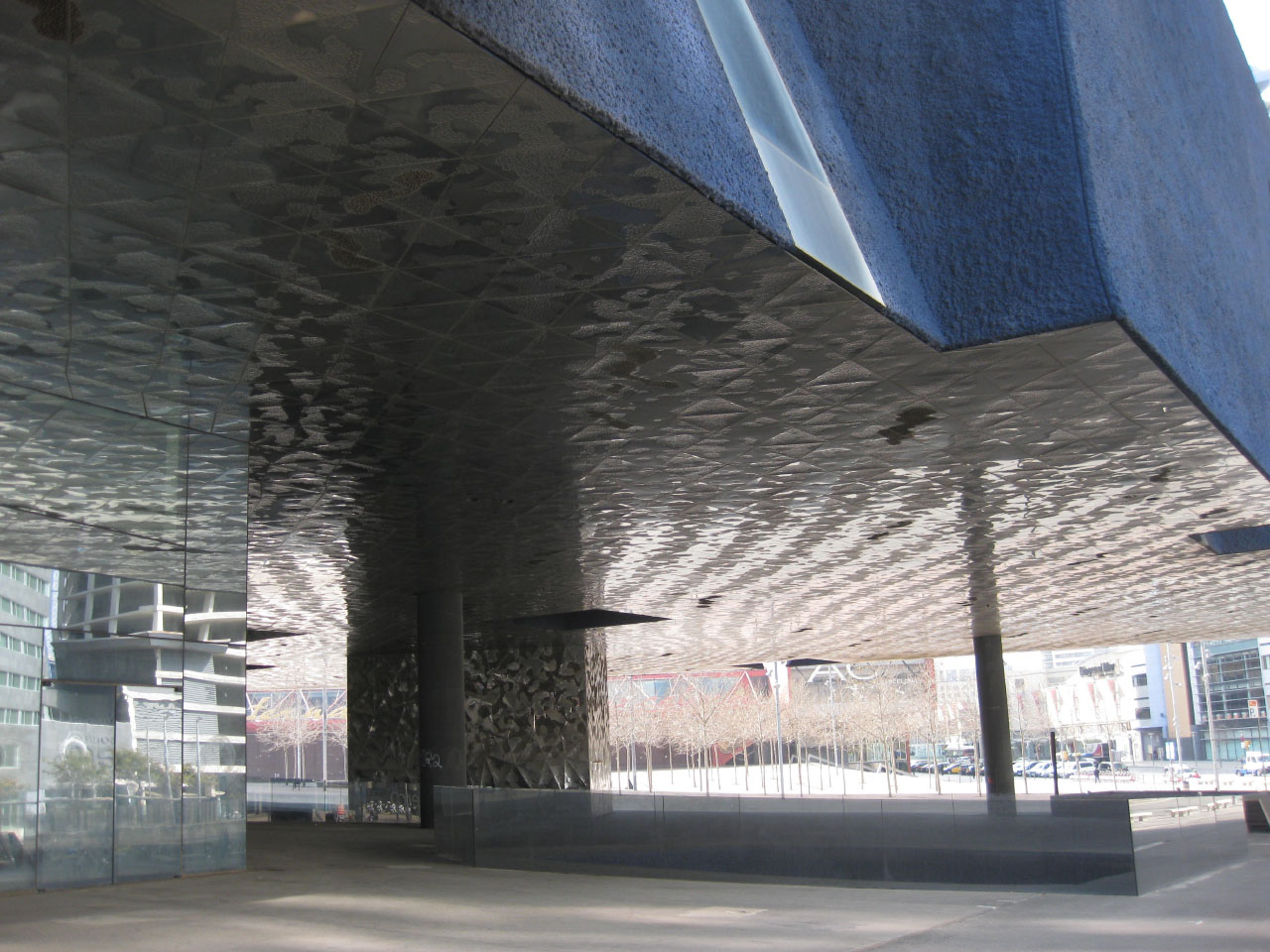
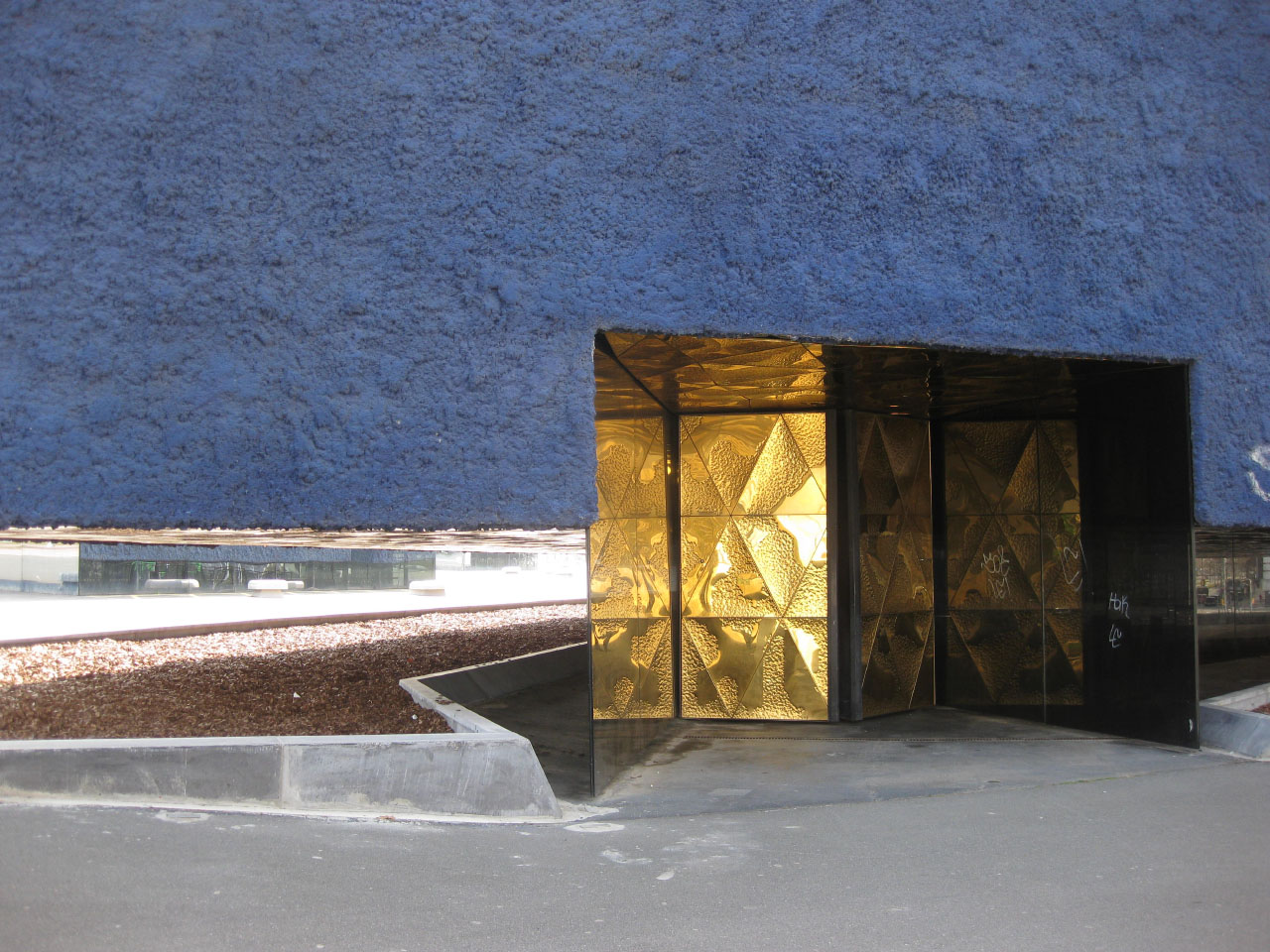
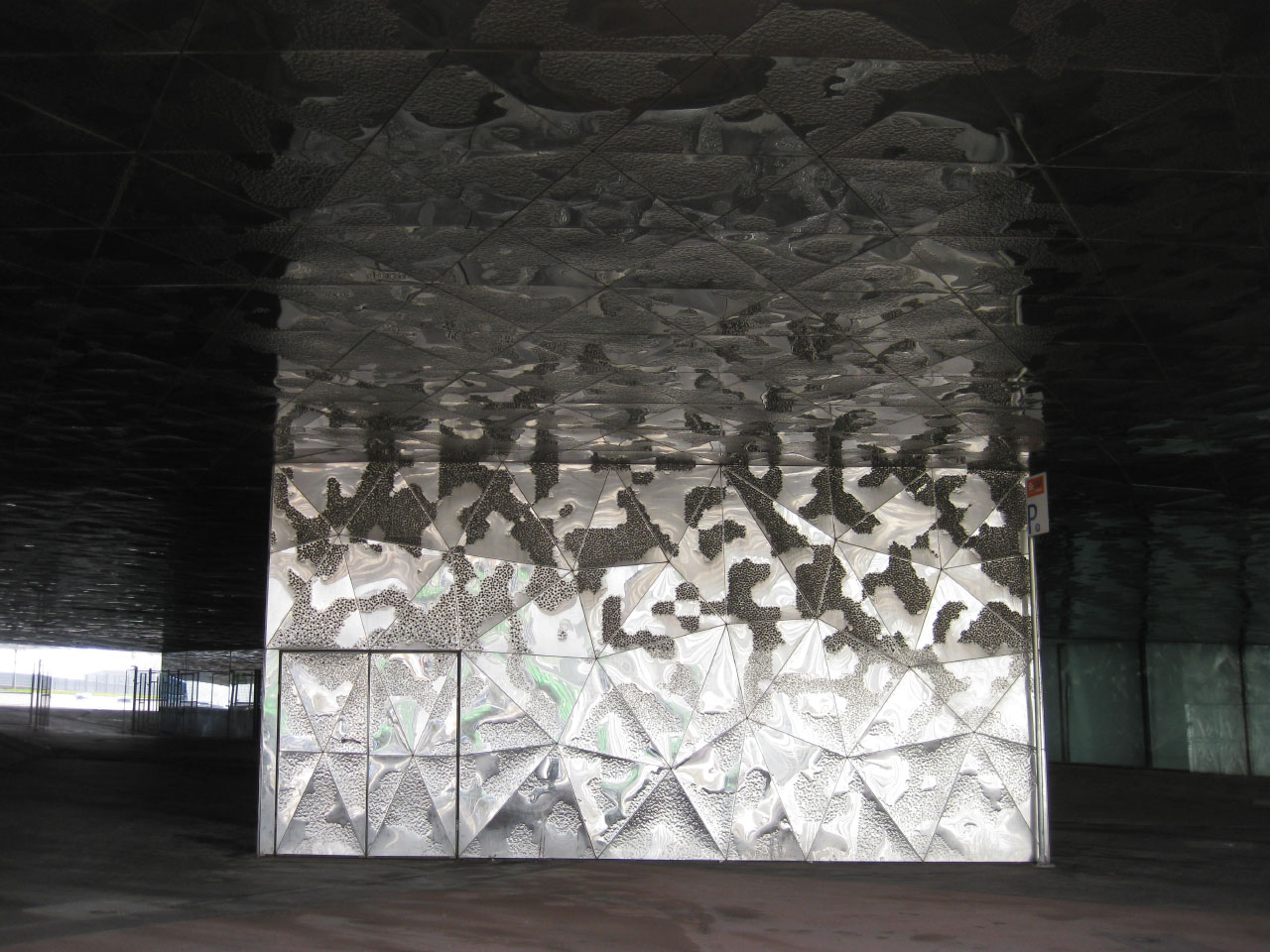
The midnight blue triangular structure measures 180 m on each side and 25 m in height and has a large interior consisting of over 9,000 m2 and two floors. The vast auditorium has a capacity of up to 3,200, and the exhibition space measures almost 5,000 m2. The spacious interior is illuminated by various polygonal skylights cut into the roof and lateral exterior of the building.
The aggressive “floating” triangle opens up to large plazas on either side, surely meant to create harmonic walking space that connects the building to the sea just a few yards away. In addition to its jagged characteristics and rustic texture, the building’s blue concrete cladding is specked with vertical, jagged mirrored strips that reflect the blue sky, resulting in a conflicted mix of naturalistic elements and modernistic, harsh design.
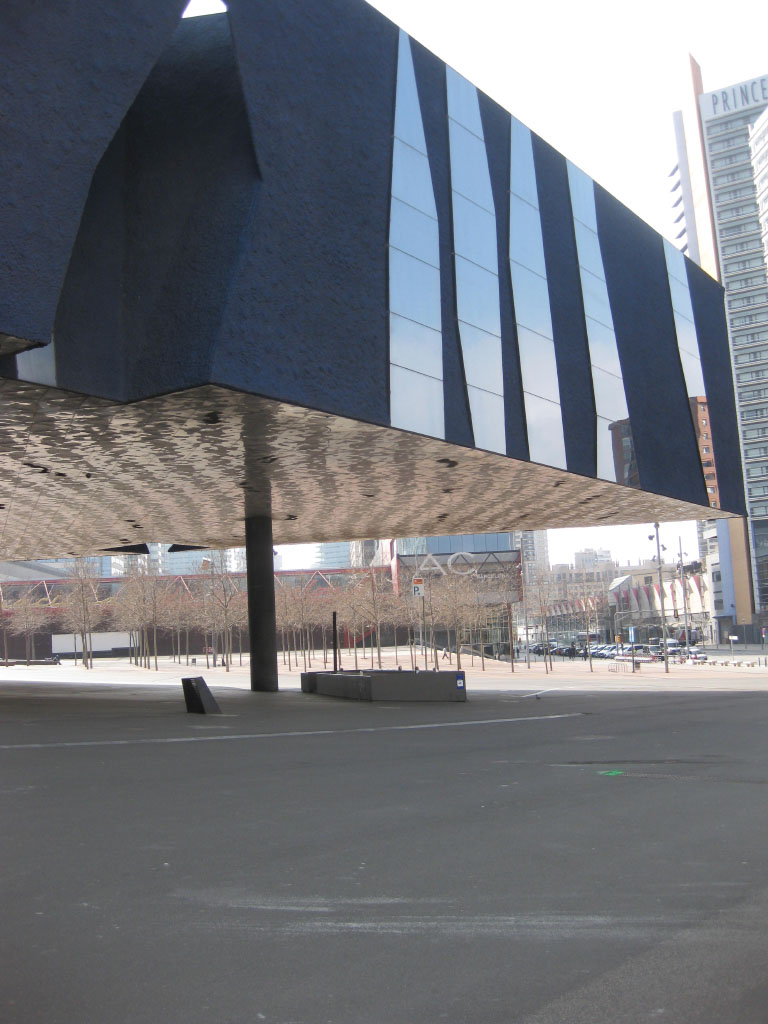
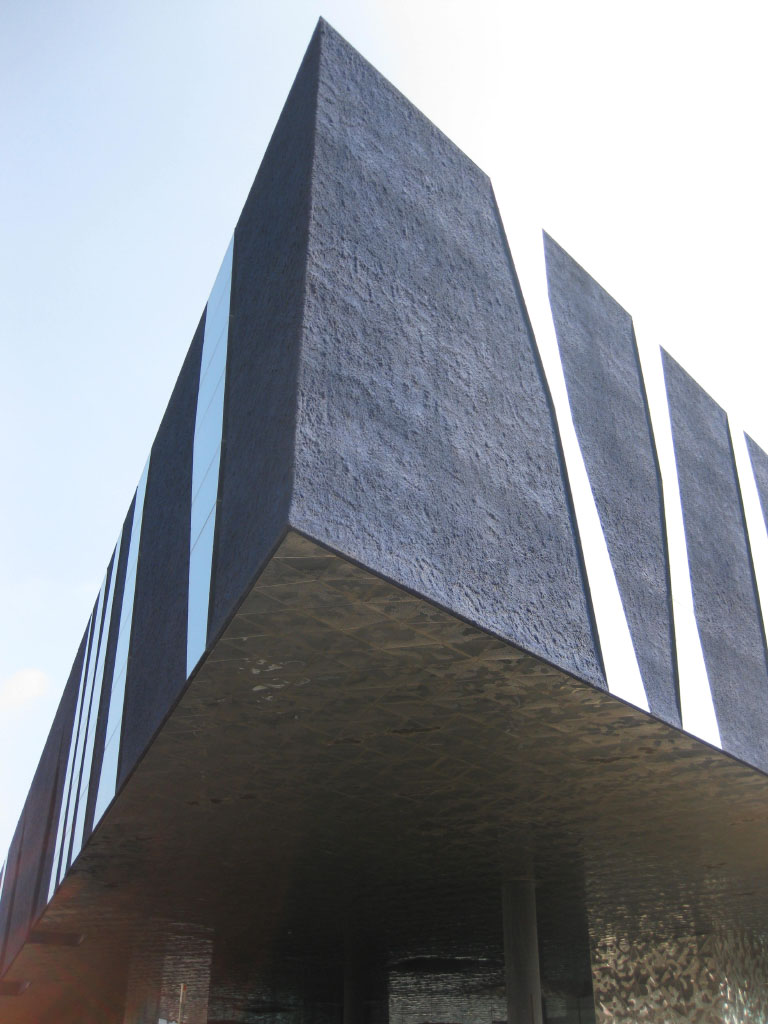
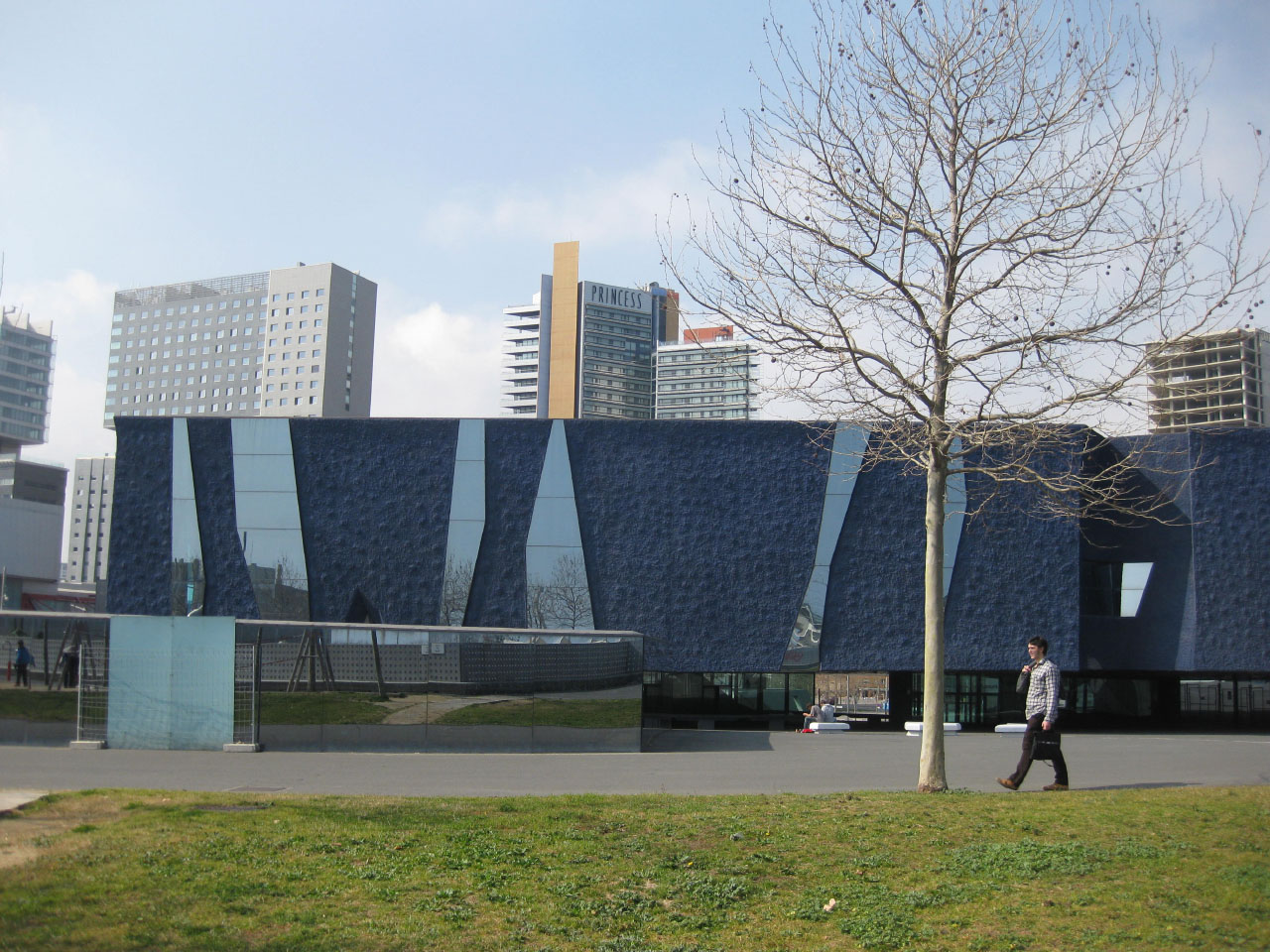
Typical of so many controversial projects (especially in Spain), the early criticism and protests were quickly forgotten after the inauguration. In fact, the Barcelona Forum building has gained quite a few admirers over the years. The surrounding area has been developed into a bustling convention area called El Parc del Fòrum, which sees thousands of visitors every year as they pass the Forum on the way to the harbor and its beautiful Mediterranean beach front, la Barceloneta.
Herzog and de Meuron have created extraordinary buildings all over the world, but in Barcelona they took advantage of the city’s adventurous design spirit, originally embodied by the work of Barcelona’s architectural saint, Antoni Gaudí. Today, despite the initial political adversity, the Barcelona Forum building is more than just a controversial but unique architectural landmark; its eccentric style and curious design features add an edgy, avant-garde element to Barcelona, considered by many to be an architectural sanctum.

Nicole Jewell
Nicole graduated from Georgia State University with a Post Graduate degree in Spanish to English Translation and a B.A. in Spanish and International Business. Presently living in Madrid, Nicole works as a freelance writer and translator and enjoys traveling around the Iberian peninsula taking photos of Spain's rich blend of historic and modern architecture. Her articles and photos have been published in various trade publications and websites.
Website: www.passtheham.com/
